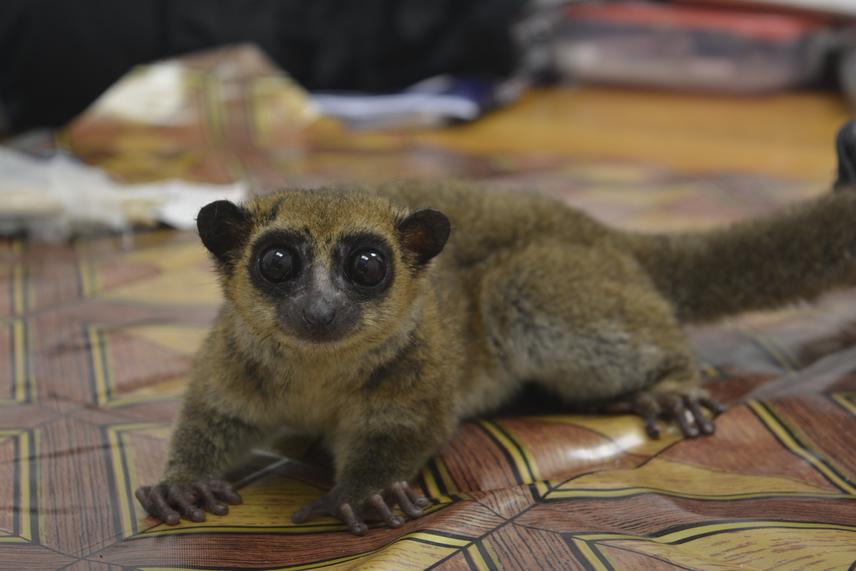Andry Herman Rafalinirina
Collect morphometric data and establish estimation of body condition, collect foraging information to confirm nutritional status for Dwarf and Mouselemur and Examine gastrointestinal parasite and ectoparasite to confirm the risk of infectious disease.

Dwarf lemur.
a. Goals.
My goal is to document the foods eaten by 2 species and their quality (via biochemical analysis) at the rainforest site in Ranomafana National Park (RNP). I will put a radio collar for dwarf lemurs and mouse lemur to allow direct observation of animals feeding. I will examine their infectious disease (ectoparasite and endoparasite) to identify the risk pathogenic for each period of study. I will characterize nutritional status of 2 species during annual cycle via morphometric data and biochemical indices from blood samples. At least I will determine the synergistic effect of food intake and infectious disease on body condition. These data will help establish the conservation status of the dwarf lemur and mouse lemur species present in Ranomafana National Park and provide information on nocturnal lemur nutrition ecology.
b. Specific aims.
1) To conduct live-trapping for dwarf lemur and mouse lemur on trails and transect in the site.
2) To collect morphometric data and establish estimation of body condition to confirm nutritional status for each species.
3) To collect foraging information (food item and time feeding).
4) To conduct food biochemical analysis and biochemical indices from blood to establish a nutrition composition.
5) To collect endoparasite and ectoparasite to confirm the risk of infectious disease.
c. Project design and implementation.
I have chosen the site of Ranomafana National Park, because there is a long tradition of mouse lemur research in Ranomafana, and other research project going on. And there is a sophistic laboratory at Center Valbio.
Concerning the Microcebus rufus (Rufous mouse lemur) and Cheirogaleus crossleyi (Crossley’s Dwarf lemur) it possible to get a large sample size with these 2 species by trapping them with the standard live traps. I and my researcher assistant will use the standard transect survey in the site to set the live traps and to follow the animal during the feeding time. We’ll set 4 traps (2 at 6-9 meters height, other 2 at 1-2 meters height) for every 25-50 meter of distance. All individuals captured are taking back to the Center Valbio Laboratory and will be marked and chipped for the permanent identification and to allow feeding observation.